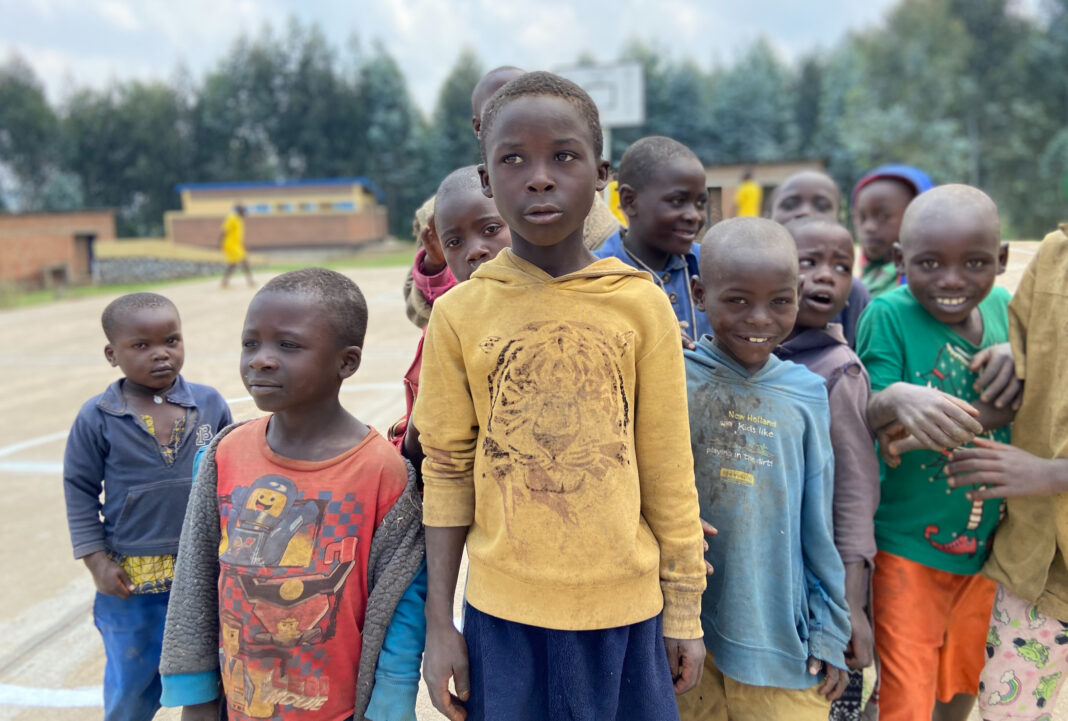East Africa looking for new or used clothes
Getting dressed in Africa, particularly in the eastern states, has never been easy for ordinary people. After ban on second-hand clothes, to dress properly has became more and more difficult

Getting dressed in Africa, particularly in the eastern states, has never been easy for ordinary people. With less than $2 per day in entrance fees, families had to manage to provide food and clothing for all members. The so-called 'international solidarity' managed for years to buffer the double problem of scarcity of financial resources that could be used for clothing and the lack of indigenous production of clothes.
Over the years, the United States and the European Union countries, through their governments and civil society organizations, have collected millions of second-hand garments and transferred them to East Africa where the indigenous populations could purchase them for a dollar or less a piece. This importation, while limiting the development of an indigenous textile manufacturing chain, has allowed people and entire families to dress over the years in decent clothing. In a part of Africa where 85% of the population is employed in agriculture and wages do not reach $2 a day, buying used clothing has always been the practice in the markets of capital cities and small villages and, in any case, the only choice available. Import rates for used clothing have always been very low and, in most East African countries, were around 20 cents per kilo. This made it possible to keep final sale prices low and allow importers to earn money. The supply chain was well-tested: donors in developed countries delivered the garments to NGOs that shipped them to the countries of final destination. Merchants bought them for a ridiculous amount of money and resold them in markets or to other small sellers. The process, as pointed out above, allowed for good coverage throughout the territory but was one of the reasons why a true Kenyan, Ugandan or Rwandan production chain was never created.
The global trade in used clothing has grown steadily over the last fifteen years and exports reached 4.8 billion USD in 2015, according to UN Comtrade, the UN commodities statistical database. In 2015, the EAC alone imported $151 million worth of used clothing and shoes.
In 2015, however, the East African Community (EAC) decided to raise the rates on the importation of clothing to almost $5 per kilo and at the same time begin to lay the foundations for structuring a 100% African textile supply chain. Although the final objective of this decision may seem noble and certainly hints at the vision that some African states are following, it is impossible not to notice that by changing import taxes so drastically overnight and not having locally produced garments available at an affordable price, the possibility of buying clothes for normal citizens has been lost.
A family of six, therefore not too large in Africa, used to use $30 a year to buy clothing with the new tariffs and, due to the impossibility of finding used clothing, for the same amount it is now possible to buy only three items of clothing. The consequence can be seen in the streets where children live with rags on every day because their families are not able to buy enough clothes. Another sector that has been strongly affected by this decision is surely that of the clothing merchants, who previously had the possibility of buying kilos and kilos of merchandise and earning a discreet sum that would allow them to live, but now many of them have had to close their stalls at the market and have been left without work. What the nation states had probably hoped for was greater investment in the textile industry capable of producing a sufficient number of garments. The result would have been lower prices thanks to economies of scale, which would have made such garments affordable to the less affluent segments of the population. So far, this has not happened. In Rwanda, for example, the cost of school uniforms often exceeds 10% of a family's annual income, and when there are several children in a household going to school, it is almost impossible for parents to purchase uniforms and provide for other family needs at the same time.
The first partner country to have challenged the measure of the ban implemented by the EAC in 2015 was the United States which, referring to the African Growth and Opportunity Act (AGOA), questioned the choice of African countries, challenging the timing and methods. To be fair, however, the only East African country that benefited from AGOA was Kenya.
Paul Kagame, president of Rwanda, has said he opposes the importation of used clothing because "no one likes to walk around wearing something someone else discarded" and he has always been a strong supporter of the Made in Rwanda policy that aims to have enough domestic production to meet the needs of the entire population. Under AGOA, Rwanda, Tanzania and Uganda were exporting a combined $43 million to the US and importing $281 million in 2016. The balance was clearly in favor of the United States, and this is also why it was decided to launch this so-called 'smart protectionism' which, according to Carlos Lopes, former head of the UN Economic Commission for Africa, is positive: "all countries that have industrialized started out with a certain degree of protectionism".
Despite the good conditions on which the ban, effective from 2019, was launched, the problem of the impossibility of supplying these countries with sufficient clothing is evident to everyone. Taking a walk through the villages of Rwanda, so the whole country except for the center of Kigali, where the upper middle class and the Rwandan aristocracy live, one can see how it is impossible for normal people to buy new clothes. The most affected are certainly the children who, until the end of their development, are forced to walk around in plastic flip-flops, often too small or too large, and dressed in rags. In pre-ban Rwanda this did not happen, and each person could count on at least 2-3 items of clothing.
While it is true that producing clothes locally would give a strong impulse to national development, it is also true that the purchasing power of Rwandans is not sufficient. Economies of scale theoretically meet this problem but to create economies of scale and reduce the price per unit there is a need for investment by companies and foreign capital in the country. If this argument can be valid and feasible for Rwanda, where annual growth reaches 8%, the same cannot be said for the other EAC countries, where a mixture of corruption and political instability makes these countries anything but business friendly.
With regard to Rwanda, the country we are going to analyze specifically, although it is true that after 1994 the country has made and is continuing to make great strides and has been renamed the Switzerland of Africa, probably the decision to impose a ban on imports of used clothing was too sudden and the effects and consequences that this choice will have on ordinary people (i.e. the poor) who still make up more than 80% of the country, have not been considered.
Attracting investors remains one of the prerogatives of the Kigali government and, to tell the truth, it must be said that the small African state is climbing the charts in terms of human development, corruption, business environment, etc., but it is also true that Rwanda, with just 14 million people, is not a particularly inviting market for the big names in the global textile sector.
So, what solution and objective should be pursued? A turnaround of governments on the ban does not seem to be a possibility on the horizon but at the same time the vast majority of citizens are not able to live with decent clothes.




